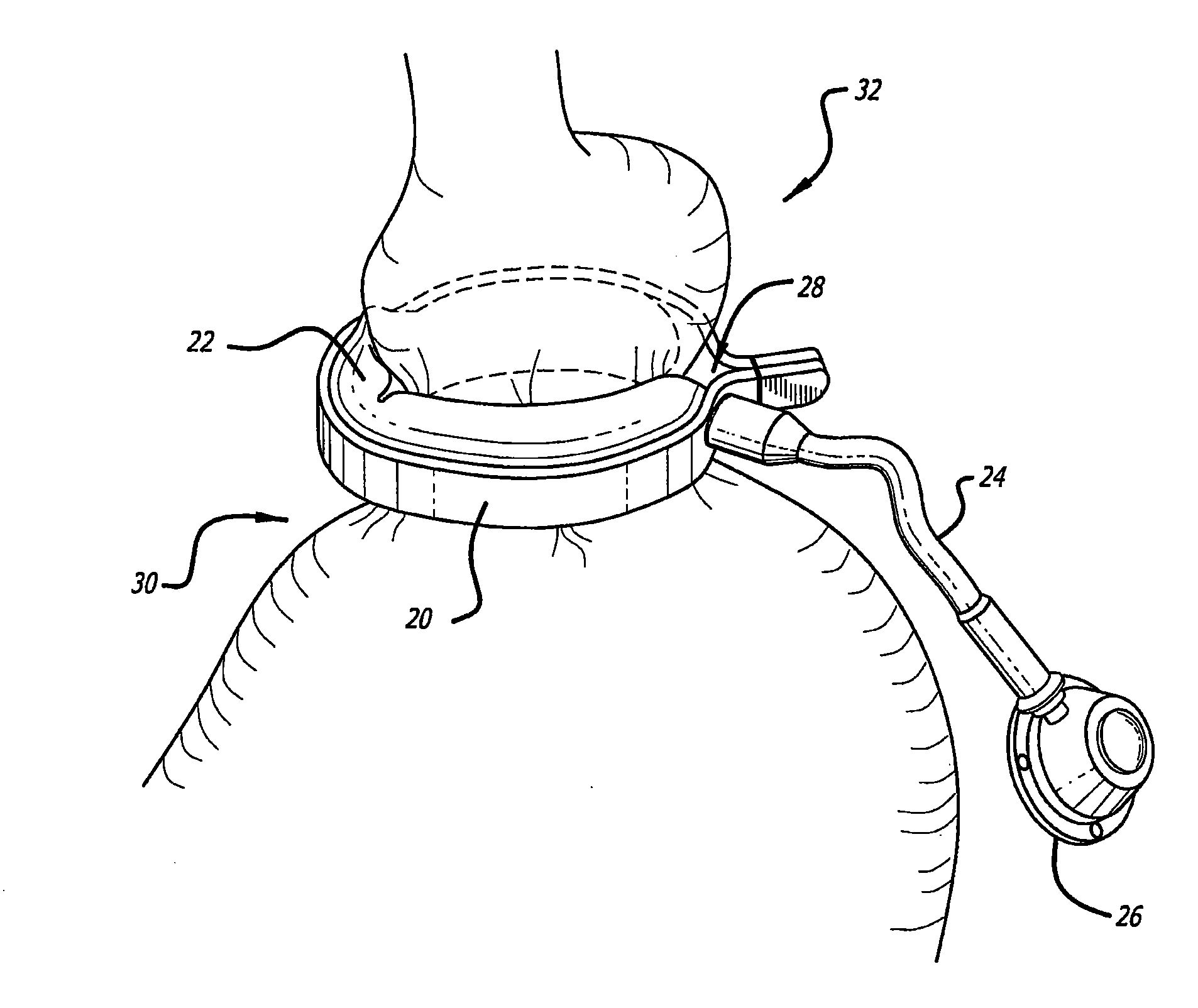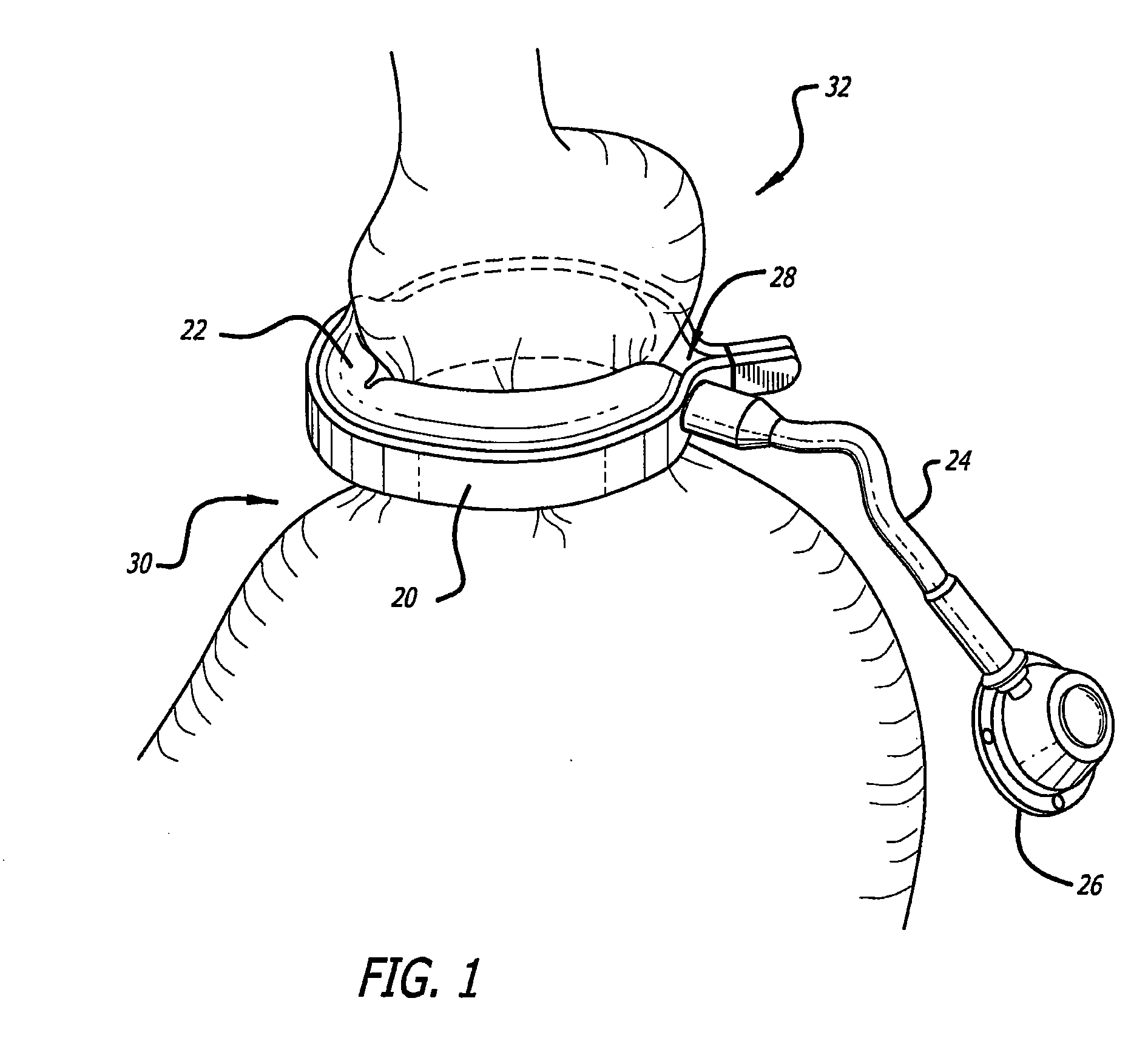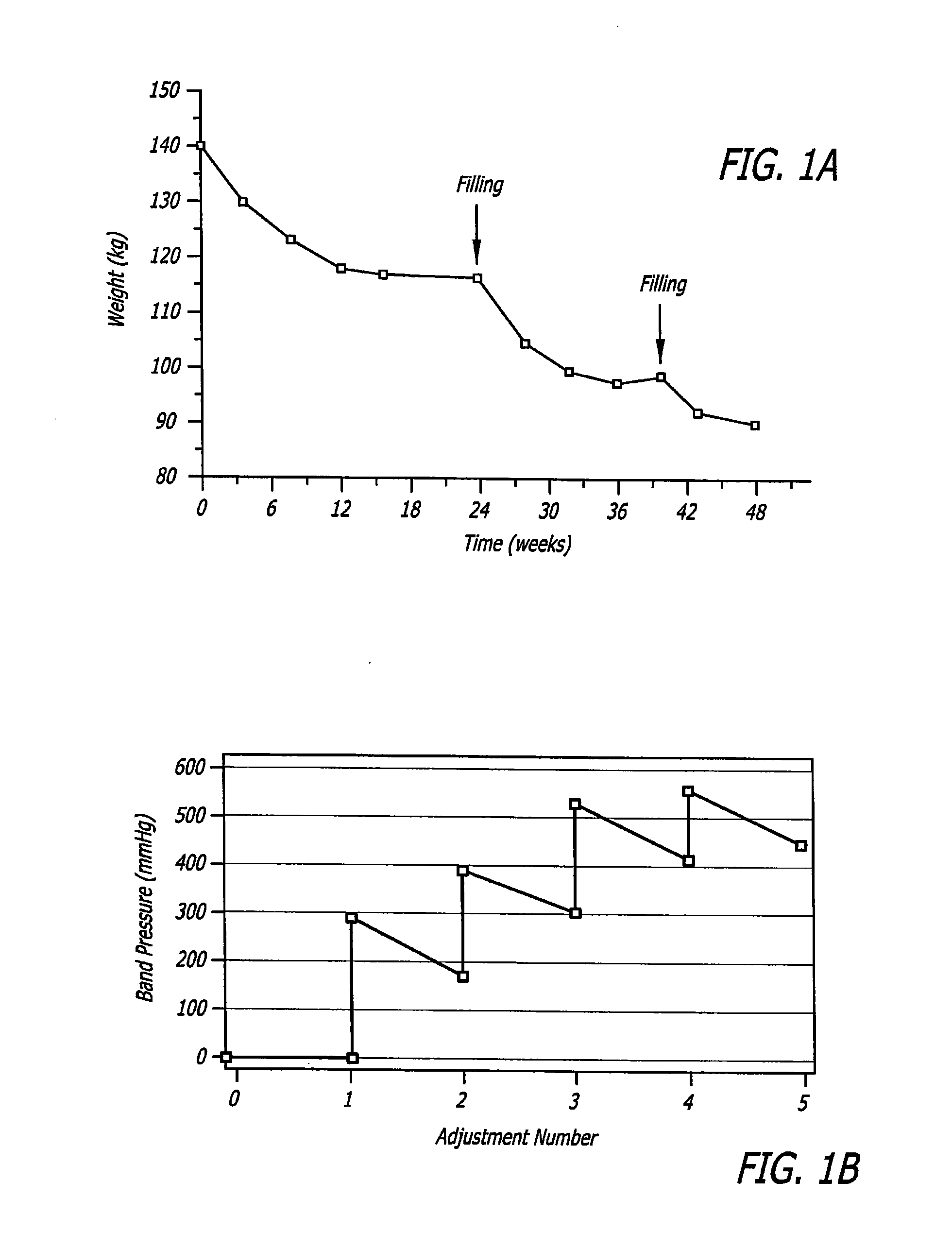Assembly and method for automatically controlling pressure for a gastric band
a gastric band and automatic control technology, applied in the field of obesity treatment using an adjustable gastric band, can solve the problems of difference, weight loss, laparoscopic adjustable gastric banding, etc., and achieve the effect of limiting the amount of food intake of the patien
- Summary
- Abstract
- Description
- Claims
- Application Information
AI Technical Summary
Benefits of technology
Problems solved by technology
Method used
Image
Examples
Embodiment Construction
[0112]At present, typical prior art gastric banding systems include a gastric band having an expandable balloon section and constant diameter tubing extending from the balloon to a port. The port is implanted near the surface of the skin so that fluid can be injected into the port with a syringe in order to add fluid to the balloon section thereby adjusting the level of restriction. One such typical gastric banding system is disclosed in U.S. Pat. No. 6,511,490, which is incorporated by reference herein. As used herein, gastric band and lap band are interchangeable.
[0113]The present invention embodiments generally include one or more bladders in constant fluid communication with the expandable balloon section of the gastric band to automatically and continuously minimize the drops or rises in pressure from the set point from the last adjustment and in doing so the proper level of restriction provided by the band in order to keep the patient in the Green Zone. The bladders are a pass...
PUM
 Login to View More
Login to View More Abstract
Description
Claims
Application Information
 Login to View More
Login to View More - R&D
- Intellectual Property
- Life Sciences
- Materials
- Tech Scout
- Unparalleled Data Quality
- Higher Quality Content
- 60% Fewer Hallucinations
Browse by: Latest US Patents, China's latest patents, Technical Efficacy Thesaurus, Application Domain, Technology Topic, Popular Technical Reports.
© 2025 PatSnap. All rights reserved.Legal|Privacy policy|Modern Slavery Act Transparency Statement|Sitemap|About US| Contact US: help@patsnap.com



